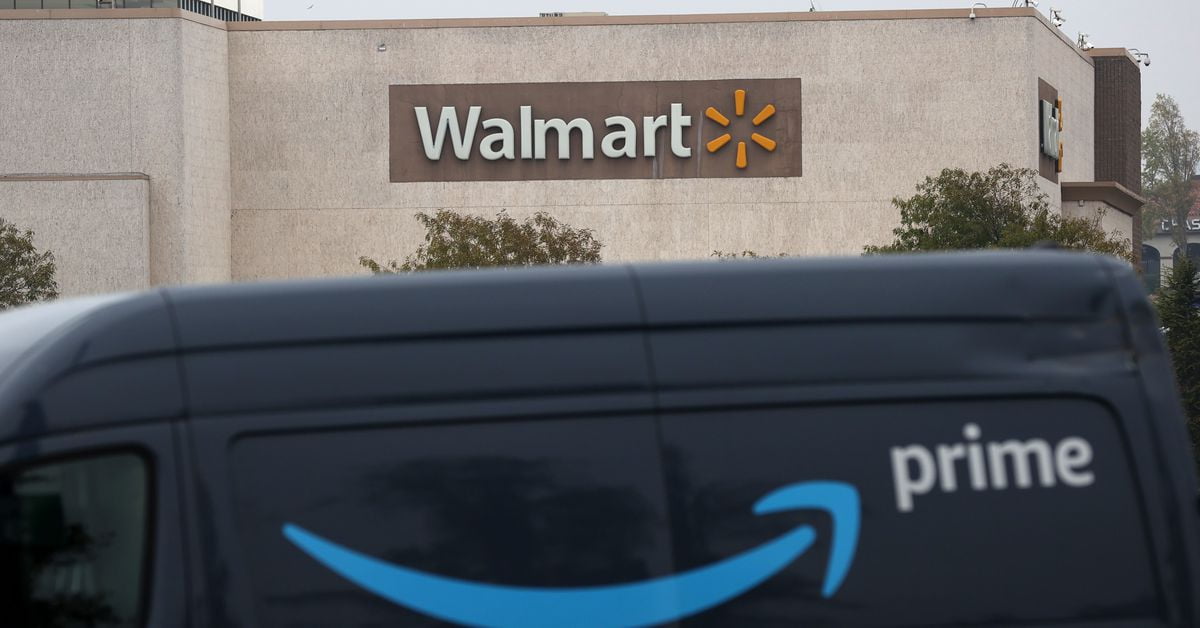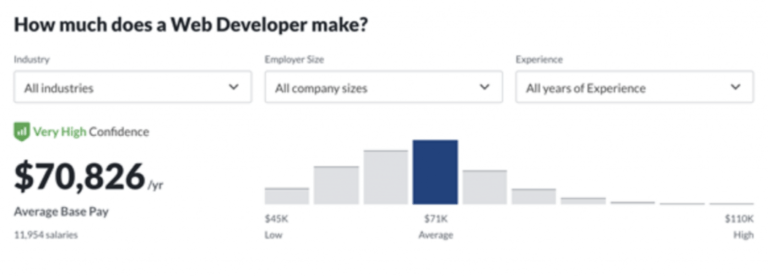
Walmart is still the world’s largest retailer, but a recent company memo highlights its struggles to overcome competitors like Amazon, Instacart, and Target. The document also hints at challenges the company’s new subscription service Walmart+ is facing in retaining new members.
The 100-page document from February, which was viewed by Recode, was created for advertising agencies that Walmart invited to compete to handle the planning and buying of ad placements for the retail giant. The memo makes several blunt assessments about the uphill battle Walmart faces to hold onto its once-dominant retail market position, including in the US grocery industry, where the company has long been No. 1 in sales.
“Grocery, the growth engine of the business, is losing share rapidly,” one slide reads. “More than ever, Walmart shopper[s] are choosing the competition,” the slide continues, alongside logos of competitors like Publix, Target, and Albertsons as well as stats showing increasing customer traffic at those chains and a decline at Walmart.
“Walmart is not first and preferred,” another slide about the grocery business says. “Must elevate quality assortment + value!”
Even in the online grocery market, where Walmart has held the No. 1 position thanks in large part to its popular curbside pickup service at its supercenter stores, the memo reports that the company is barely holding on to the lead position. Delivery company Instacart gained popularity at Walmart’s expense early in the pandemic, when the retail chain could not keep up with the rush of customer demand, the memo states, and is seen on an enclosed chart as being nearly even with the retail giant for the top position in the US online grocery market.
Walmart spokesperson Molly Blakeman declined to comment on the memo and its contents.
While executives at the $400 billion retail giant are known to be self-critical internally, the memo is notable in the stark picture it paints of how competitors are chipping away at Walmart’s strengths, and the challenges the company is encountering in trying to build a viable alternative to Amazon Prime. Walmart has indeed benefited from the pandemic, with revenue and profits increasing in the company’s last fiscal year, and e-commerce sales soaring nearly 80 percent. But many of Walmart’s competitors have benefited too, from Amazon and Instacart to Target and regional grocery chains like Texas giant HEB — and the memo makes that fact clear.
One of Walmart’s biggest new bets is Walmart+, a subscription service that Recode first reported on and which launched in September at $98 a year or $12.95 a month. The main perk of the service is unlimited delivery of groceries and other general merchandise from Walmart stores that, for orders more than $35, will be delivered as soon as the same day. The service also offers next-day delivery on some items from Walmart.com, fuel discounts at Walmart gas stations and those of partners, as well as access to “Scan & Go” technology, which allows shoppers to use smartphones to scan and purchase goods at Walmart stores.
The Walmart memo from February says the company is seeing improvements when it comes to the percentage of members who renew when their membership lapses. But Walmart says the service still needs to improve renewal rates, as well as the rate at which free-trial participants convert to paying members and the number of members who purchase general merchandise alongside low-profit groceries.
A source familiar with Walmart+ told Recode that retaining members has indeed been an issue for the new subscription service in its short existence and that retention is strongest among members who use the gas-discount perk of the program. Walmart+ is still less than a year old, though, and the memo says that the company will add more perks to the service in 2021 and might offer longer free trials as well as discounted memberships. Ahead of the Walmart+ launch, Recode reported that the retailer had considered other perks such as a branded credit card, early availability on product deals, and member access to another company’s popular streaming video service. Walmart felt pressure to create its own membership and loyalty program in part because more than half of Walmart’s top-spending families also have Amazon Prime memberships, Recode reported in 2020.
Amazon, of course, is not the only threat mentioned. The memo also reveals a shrinking lead for Walmart over Instacart, the online grocery company whose contractors shop for orders at partner grocery chain stores and deliver them to customer doors that same day. An enclosed chart shows Walmart owning almost a 40 percent share of the online pickup and delivery grocery market prior to the pandemic, compared to just around 20 percent for Instacart. But the graphic shows Walmart’s share shrinking to 31 percent by February of this year, and Instacart nipping at its heels with about 30 percent share (Amazon is listed as an online grocery competitor on the slide, but its market share is not plotted on the chart.) Walmart states in the memo that it hopes to maintain its No. 1 position, in part, by investing in innovations like drone deliveries and the creation of mini-warehouses attached to stores that can more quickly fulfill online orders.
Additionally, the memo states that Amazon and Target earned a larger portion of the average Walmart shopper’s spending in general merchandise categories during the pandemic. Among a competitor set that included Amazon, J.C. Penney, Target, and several other retailers, the document shows Walmart and Walmart.com sporting some of the lowest satisfaction shopper scores for quality and selection in the apparel category. Still, a company mission is to “establish Walmart as a credible apparel destination,” the document says.
Despite all the hurdles and competition on many fronts, Walmart is today valued $20 billion higher than it was a year ago. But as the pandemic subsides in the US, Walmart seems well aware that continued growth is not guaranteed — and that its response to the array of competitive threats it now faces will determine its future.






